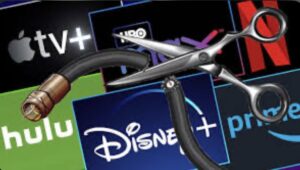
A wise man once said, “All good things must come to an end.” It is incredible to see a change in the world over the years, but within a blink of an eye, the United States may finally say goodbye to cable television.
When television broadcasting began in the United States around the 1940s, broadcast networks conveyed electromagnetic signals entirely over the airways.At the time,there were only 10 television stations granted commercial TV licenses .
For the next thirty years, cable TV systems delivered broadcast network signals to communities and rural areas. As we approach 2023, TV remains a constant presence in most Americans’ lives.
Its fast-moving, visually attractive, highly entertaining style commands many people’s attention for several hours each day. The average watch time is in fact three hours a day but in the moment ,viewers actually don’t think about and enjoy their experience.
As technology continues to progress and improve the way of life, cable tv has yet to make a huge difference resulting in the loss of subscribers. According to a new Pew Research Center survey of U.S. adults, the share of Americans who say they watch television via cable or satellite has plunged from 76% in 2015 to 56% this year.
To no surprise, streaming services are driving the change and reaching the larger audience of GenZ/millennials. In the age group of 18-29, 91% of nonsubscribers in this age group say they do not subscribe because they can access the content they want online.
Kevin Thomas, an engineering student, said he could not remember the last time he turned a cable television.
“I feel like our generation is very different from the past because we have other outlets than just cable not only to entertain ourselves but to get information as well. I watch everything from my phone or computer”, said Thomas.
Streaming now makes up more than one-third of all television consumption in the U.S., according to the Gauge study of TV consumption data. Netflix continues to be the top streaming platform, taking 7.7% of the total share of TV consumption in July.
Vanessa Styles, healthcare supervisor, said streaming grew during the Pandemic.
“COVID-19 had a huge impact on streaming. With nowhere to go, the only thing people could do was watch television, and you better believe they were not watching boring shows on cable”, said Styles.
Shortly after COVID-19 began to surface in the U.S. and quarantine was put in place,the total hours spent watching TV was up 81% according to Tvision Insights.Streaming services will continue to develop and have more to offer in the future, although rates may vary and be comparable to cable.
Although the rise in cord-cutting is still in effect, Cable TV still stands. News, weather, and sports remain exclusive to the cable world. Until that changes, cable TV will be here to stay.